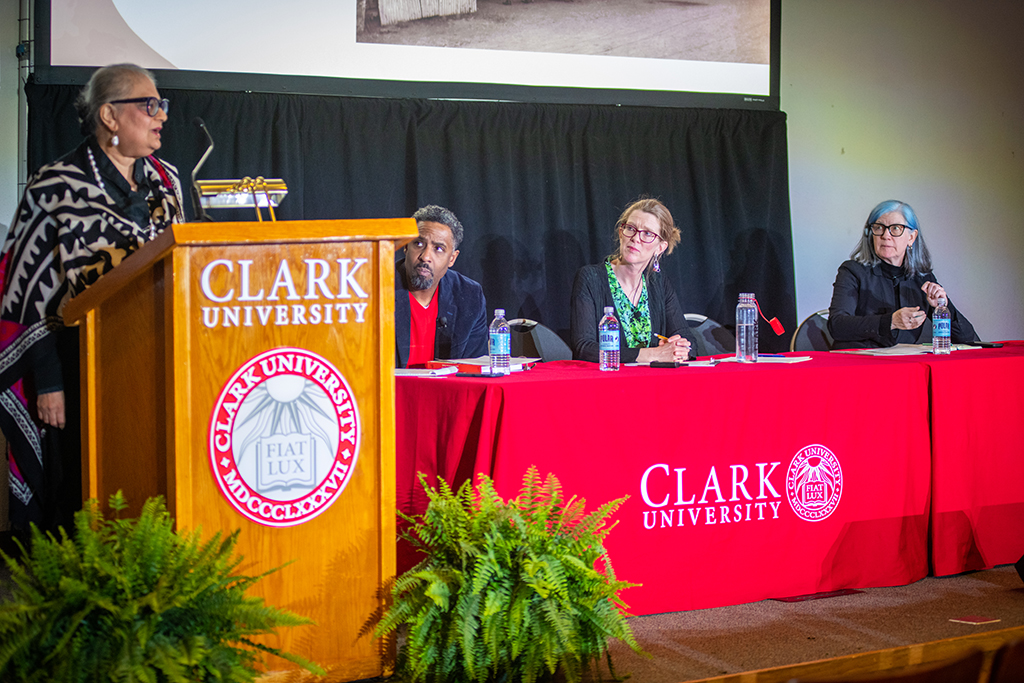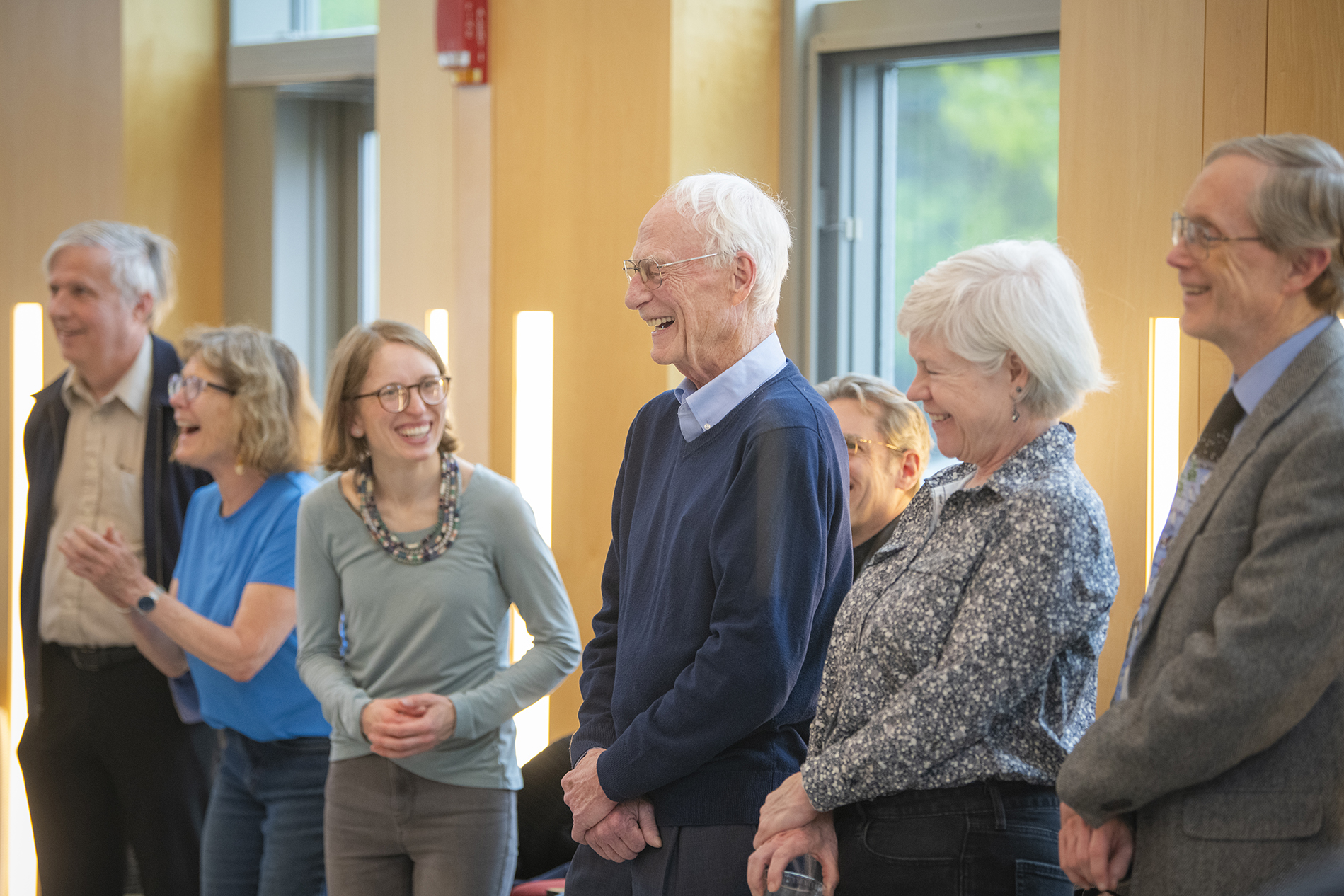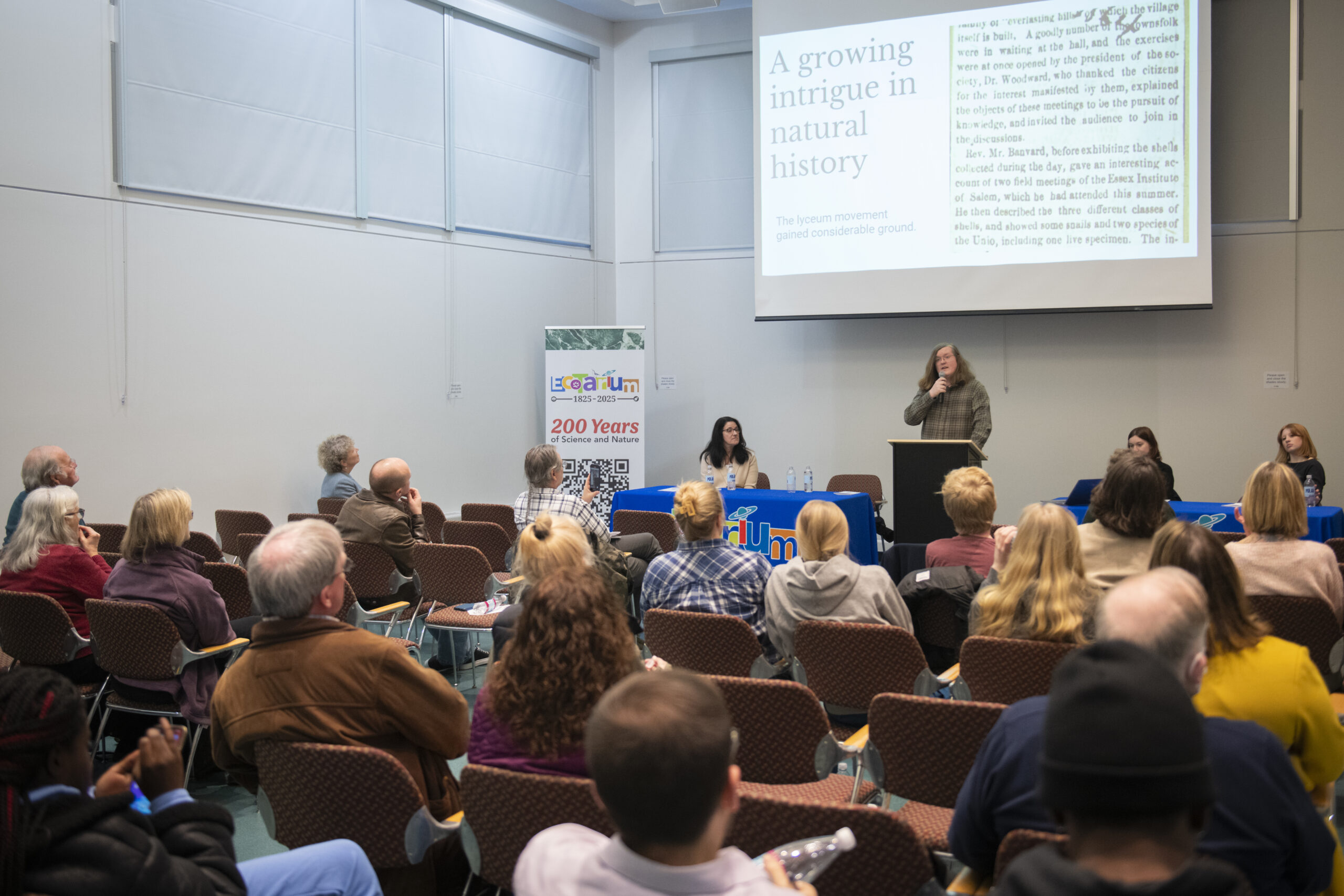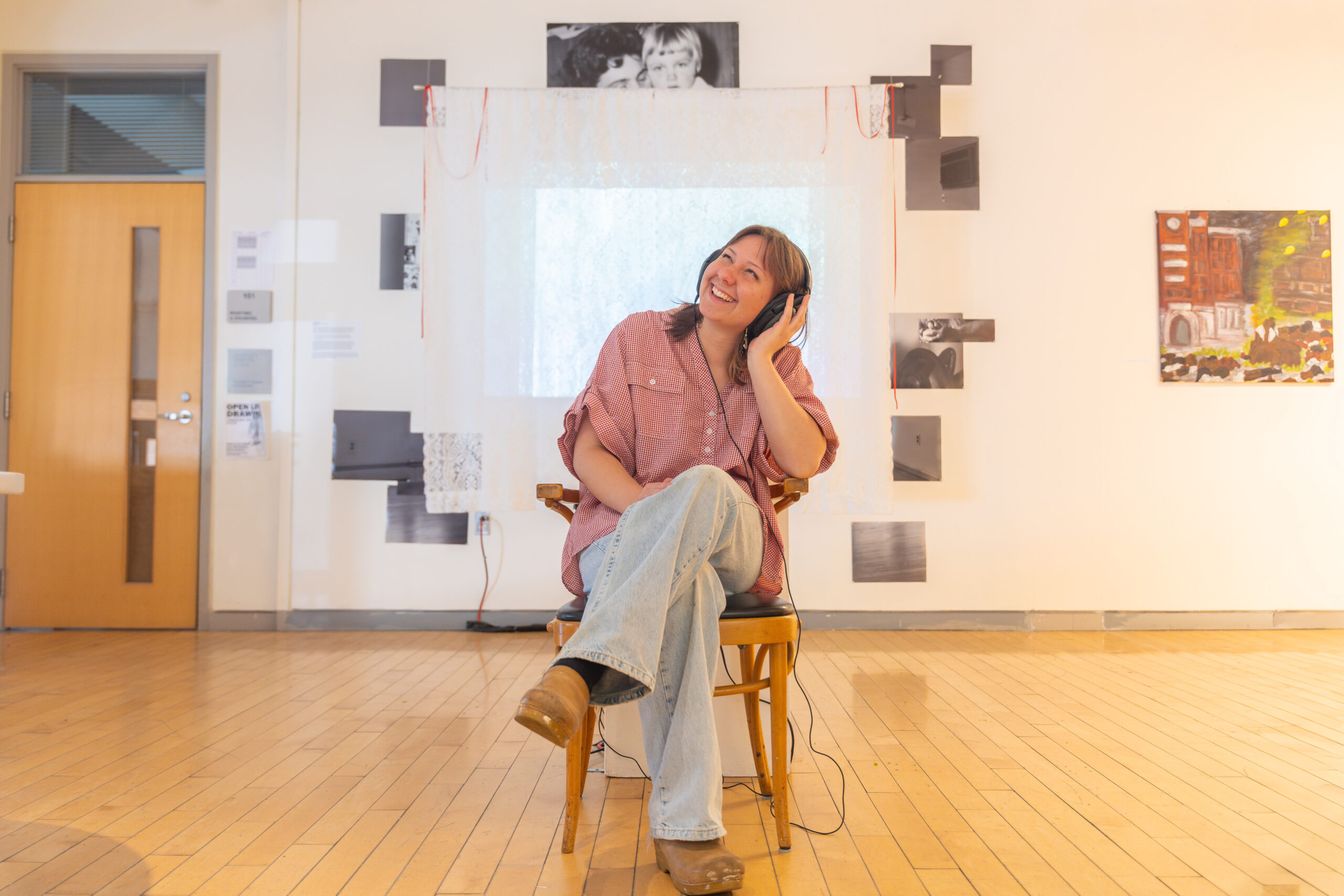Race and gender at heart of research
From left: Professor Parminder Bhachu, Ousmane Power-Greene, Kristin Wilson, and Anita Fábos
Kristina Wilson, professor of art history, and Parminder Bhachu, professor of sociology, both put gender and race at the heart of their research, but from unique lenses. Wilson has delved into the study of the modernist design styles that boomed during America’s post-war decades, while Bhachu examines why people who migrate across international borders are particularly innovative.
Part of the Academic Symposium celebrating the Inauguration of President David B. Fithian, the April 29 discussion on “Race, Gender, and Ethnicity” spotlighted recent works by Wilson and Bhachu. Wilson’s book “Mid-Century Modernism and the American Body: Race, Gender, and the Politics of Power in Design,” explores the indelible mark left by modern design while also considering how modernism was marketed to diverse audiences. Bhachu’s book “Movers and Makers: Uncertainty, Resilience and Migrant Creativity in Worlds of Flux,” spotlights the resilience and creativity of migrants who navigate a changing world.
Wilson says the popular story is that midcentury modernism became popular for “everyone” in the mid-century decades.
“This is a glossy story that overlooks some very messy realities. It assumes that affordability is, first of all, the only thing that matters,” she said. “As if people don’t buy expensive items as a long-term investment for their homes. Secondly, it prioritizes aesthetics and thinks less about actual physical bodily comfort.”
Wilson noted that Paul Williams, the first black architect to become a member of the American Institute of Architects, suggested that modernism could be understood as one style among many rather than something divisive.
“His whole attitude is one of inclusivity rather than creating divisions,” Wilson said.
Bhachu’s research reveals that immigrants are among the world’s most innovative thinkers. In her book she investigates why that is, focusing on the concept of “movement capital,” a combination of migration and maker capital skills that are social, cultural, and technical.
“The vaccine for coronavirus is essentially a multiple-migrant phenomenon,” she said, noting that Noubar Afeyan, the co-founder and chairman of Moderna and CEO of Flagship Pioneering, is an Armenian multiple migrant.
Movement capital is marked by agility and plasticity, she said.
“It is accrued in the diaspora of migrant movement phenomenon,” Bhachu said. “This is part of the everyday existence. It’s a taken-for-granted way of working.”
Session moderators Ousmane Power-Green, professor of history, and Anita Fábos, professor and associate director of the Department of International Development, Community, and Environment, asked Wilson and Bhachu how their research can contextualize gender and race in the present.
“I think what is so significant to me is that so many of the issues that are faced by great-grandparents and grandparents, come up again and again,” Bhachu said.
Wilson said that history has narrowed the stories of race and gender, and she looks to bring an understanding of modernism to a design industry that is still overwhelmingly white.
Read about the other sessions held for the Academic Symposium, one of the events celebrating the Inauguration of President David B. Fithian:
- Climate change work must extend beyond research
- Faculty put advanced digital technology to use in the classroom and lab
- Symposium session addresses Clark’s impact in the community
- The fraying of democracy is a global problem, professors say
- ‘The truth is what we see on the ground’
- Faculty researched, and learned from, the pandemic
- Life, and death, considered through the lens
- Academic Symposium inspires discussion on consequential concerns





